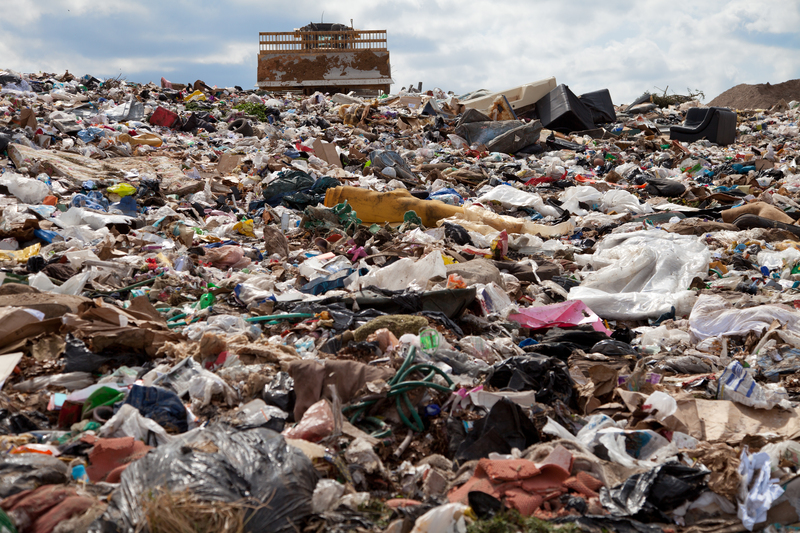Create Space for Success: Master Office Clearing Techniques
Is your office feeling cluttered, stagnant, or uninspiring? If so, you're not alone. Cluttered workspaces can silently sabotage productivity, creativity, and even morale. In today's fast-paced professional world, mastering office clearing techniques is essential not only to tidy up your immediate environment but also to lay the foundation for success and efficiency. This comprehensive guide will provide proven strategies to help you create an organized, invigorating, and productive office space that supports your professional goals.

Why a Clear Office Space Matters for Success
Studies have repeatedly shown that a disorganized environment can lead to distracted thoughts, diminished creativity, and increased stress. Conversely, a clear, organized office can:
- Boost productivity by minimizing distractions and wasted time searching for items.
- Enhance focus and creativity by inviting fresh energy into your workspace.
- Improve your professional image to both clients and colleagues.
- Promote better well-being and reduce feelings of overwhelm or anxiety.
Mastering office clearing strategies isn't just about aesthetics--it's about laying a strong groundwork for professional achievement.
The Psychology Behind Office Clutter
Why do we let clutter accumulate in the first place? Understanding the psychology at play can help you overcome barriers to a pristine workspace.
Attachment to Objects
Many people find it difficult to part with items because of perceived sentimental value or a "just in case" mentality. Recognizing these psychological blocks is the first step towards a breakthrough.
The Illusion of Busyness
Sometimes, a cluttered desk gives the impression of being constantly busy. But in reality, this may disguise inefficiency and cause unnecessary stress and distraction.
Effective Office Clearing Techniques: Step-by-Step
To create space for success, it's important to approach clearing your office with purpose and a plan. Follow these proven steps for maximum results:
1. Set a Clear Intention
Before you start, define your goals for clearing your office. Is it to improve productivity, foster creativity, or simply to find things more easily? Setting a clear intention will help guide your actions and keep you motivated.
2. Conduct a Thorough Assessment
Take a realistic look at your office environment. Identify:
- Areas where clutter tends to build
- Items you regularly use versus those that simply take up space
- Obsolete electronics, outdated paperwork, and unused furniture
3. Declutter by Category, Not by Area
One of the most innovative office clearing strategies is to declutter by category--for example, tackle all paperwork one day, office supplies the next, and digital files after that. This targeted approach is more effective than working room by room.
4. The Four-Box Method
Label four boxes: Keep, Donate, Discard, Relocate. Every item in your office should go into one of these boxes. This makes decision-making easier and more systematic.
5. Digitize Your Documents
Physical paperwork is a major source of office clutter. Invest time in scanning vital documents, saving them securely in digital form, and disposing of unnecessary hard copies. This also makes document retrieval much faster and reduces the risk of losing important information.
6. Organize What Remains
For items that make the cut, assign them designated homes. Use:
- Drawer organizers for stationery and supplies
- Folder systems and color coding for documents
- Labeling to clearly mark shelves, bins, and drawers
- Vertical storage solutions to maximize space
7. Tidy Up Daily
A quick daily tidy--just five minutes before you leave--can prevent clutter from re-accumulating. Make it a habit!
Tips to Maintain a Clutter-Free Office Space
Once you've put in the work, protect your investment by following these maintenance tips:
- Adopt a "one in, one out" rule: For every new item you bring into your office, remove something else.
- Schedule regular reviews: Set a calendar reminder for a quarterly or monthly assessment of your office space.
- Limit personal items: While a few personal touches are great, too many can quickly give a cluttered impression.
- Go paperless: Switch to digital subscriptions, invoices, and contracts whenever possible.
How Your Digital Workspace Impacts Physical Clutter
Don't ignore your computer desktop and shared drives! Digital clutter can be just as overwhelming as physical mess. Use these techniques to clear your digital office space:
- Organize your files: Create a simple, consistent folder structure for easy retrieval.
- Delete the unnecessary: Clear out outdated files, downloads, and duplicates regularly.
- Maintain inbox zero: Set aside time each day to process emails instead of letting them pile up.
- Use productivity tools: Leverage cloud storage, automated backups, and workflow apps to keep digital chaos at bay.
The Role of Ergonomics in Office Organization
Office clearing goes hand-in-hand with ergonomic design. Once you've minimized clutter, ensure your workspace layout supports health and productivity:
- Arrange frequently used items within arm's reach.
- Set up your monitor at eye level to prevent neck strain.
- Choose a supportive chair and position it properly.
- Use standing desks or ergonomic accessories as needed.
A tidy, well-organized space is only as successful as it is comfortable.
Minimalism: Less is More
Consider embracing a minimalist approach. Minimalism isn't about deprivation--it's about intentionality. Ask yourself: does each item serve a purpose or bring you joy? If not, it may be time to let it go. This philosophy helps you create space for productivity and inspiration.
Personalizing Your Cleared Office for Success
Once your workspace is decluttered and organized, personalize it to inspire motivation and comfort. But remember: keep it simple and intentional.
- Add a plant: Greenery improves air quality and boosts mood.
- Showcase a few photos or artwork: Choose items that make you happy but don't crowd your workspace.
- Incorporate a vision board or success reminders: These can keep your professional goals front and center without creating clutter.
- Use color wisely: Colors like blue and green promote focus and calm, while accents of red or orange can energize your space.
Best Practices for Shared Offices and Collaborative Spaces
If you work in a shared or open-plan office, clearing and maintaining space for success involves cooperation and clear communication.
- Establish shared organization standards: Agree on communal space usage, storage, and maintenance.
- Label clearly: Avoid confusion by labeling shared equipment, supplies, and storage areas.
- Respect boundaries: Personalize your designated area, but be mindful not to spread items into shared spaces.
Outsourcing: When to Call a Professional
Sometimes, the task feels overwhelming or you have years' worth of built-up clutter. If you find yourself procrastinating or feeling stuck, it may be helpful to hire a professional office organizer. Experts can:
- Assess your needs and develop a personalized clearing plan
- Provide hands-on support with sorting, organizing, and disposing of items
- Offer strategies for maintaining a clutter-free space long-term
Psychological Benefits of a Cleared Office Space
Beyond productivity and efficiency, a well-cleared office can:
- Lower stress levels
- Enhance creativity
- Make room for new opportunities
- Improve confidence and overall work satisfaction
Common Mistakes and How to Avoid Them
- Procrastinating clearing tasks: Break it into manageable segments--small victories add up!
- Sorting without a system: Always use boxes or bags labeled for keeping, donating, discarding, or relocating.
- Letting paperwork pile up: Deal with documents promptly and digitally when possible.
- Neglecting digital clutter: Tidy your digital office regularly to maximize clarity and focus.
- Over-personalizing: Keep personal decor curated and intentional for a clean, professional look.
Key Takeaways: Start Creating Space for Success Today
- Start with intention--know your "why"
- Declutter methodically, by category
- Implement digital and physical organization systems
- Focus on habits to maintain your success space
- Personalize with care for inspiration
Mastering office clearing techniques transforms your workspace into a powerhouse for productivity, creativity, and sustained success. By investing time in organizing and maintaining your office, you not only enhance your professional image but also create space for real growth and achievement. Start implementing these techniques today, and watch as clear space translates into clear results!

Frequently Asked Questions on Clearing and Organizing Office Spaces
How often should I clear my office?
Ideally, a deep clear-out should be done at least once a year, with mini-clearings or tidying sessions on a weekly or monthly basis depending on your workflow and clutter tendencies.
What's the fastest way to clear my office?
If time is limited, use the Four-Box Method (Keep, Donate, Discard, Relocate) to quickly make decisions about each item. Prioritize visible clutter and surfaces first for maximum impact.
Should I involve my team in office clearing?
Absolutely--collaborative clean-outs build accountability and shared ownership of the workspace's success. Set goals as a team to keep everyone motivated and involved.
How do I maintain a clutter-free desk with a busy schedule?
Set aside five minutes at the end of each day for tidying. Incorporate digital tools and reminders to keep both your physical and digital desktops organized.
Conclusion: Transform Your Office into a Launchpad for Success
Ultimately, creating space for success isn't a one-time project--it's a continual process of evaluation, organization, and care. Adopt these office clearing techniques to unleash your full potential. Your environment influences your performance and well-being--make yours work for you!
Ready to start your journey? Armed with these tailored office cleaning and clearing strategies, you are now equipped to transform your workspace--and set yourself up for unprecedented professional success.